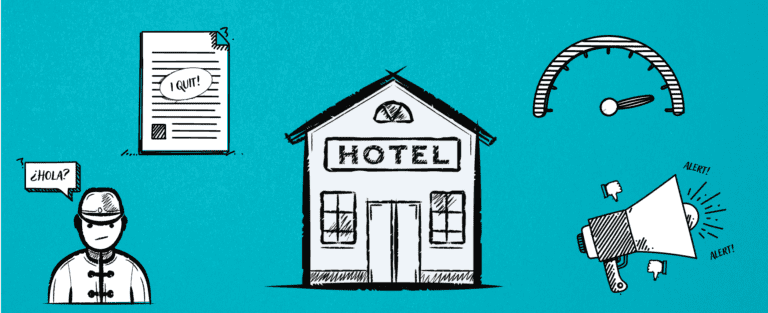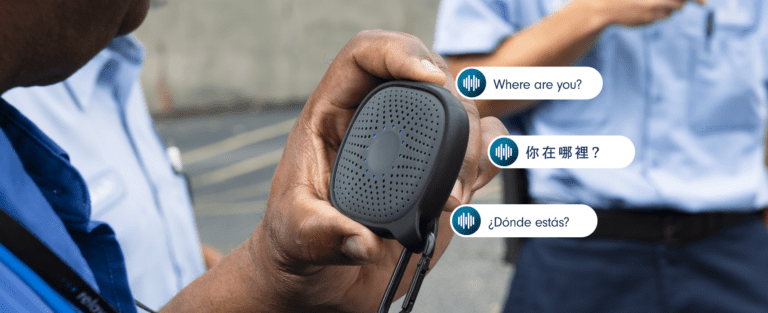When creating disaster preparation plans it can be incredibly complicated, not to mention time-consuming to run through potential worst-case scenarios. And while it’s crucial to truly try to envision every horrible thing that could happen, sometimes imagining it is worse than the actual event.
As you get ready to implement your panic button plan for your hotel or resort, you might want to have a few run throughs first.
Learn from fire drill protocol
Many agencies offer tips on dealing with emergencies. For instance, the U.S. Fire Administration has clear instructions on how to access and share fire safety materials in hotels and motels. One of their tips includes creating handouts, with the advice to customize and share the flyer. And since most hotels understand how important it is to keep guests safe in the event of a fire, some hospitality groups have specific advice for conducting a hotel evacuation drill. What none of these organizations offer yet, is a complete tipsheet for dealing with panic button issues or mishaps.
How to anticipate what might go wrong with your panic button plan
Since there’s no universal information for troubleshooting your panic button plan, we came up with a list of what could go wrong and how to avoid it. This is in no way a complete list, nor is it meant to take the place of any safety protocol advice from your local law enforcement agencies.
Some worst case scenarios you might be able to avoid:
- Staff refuse to use their panic buttons
While properties nationwide face crowds of visitors again, staffers might feel overwhelmed by the new regulation and protocols. And let’s face it, they might simply refuse to use panic buttons.If your staff balks at the idea of keeping a panic button on them at all times, clearly explain why this is not an option. Panic buttons exist for remote staff safety. It also keeps their co-workers safe, since one person might be able to contact help for a colleague. And if they still try to refuse, you might have to set up random spot checks for panic buttons. Better yet, consider rewarding the staff who vigilantly wear and test their own panic buttons. - People forget to charge their panic buttons
Some people aren’t great at keeping their devices charged, and that might affect your overall safety plan. If staffers forget to charge their panic buttons, you’ll have to set up many more areas to charge devices. That could be power strips in break rooms or even adding power banks to the tools they use daily. And consider implementing a check in a few times daily to ensure their panic buttons are charged. - Guests worry your property isn’t safe or that they’re being recorded
It’s entirely possible that your guests will start to wonder about the panic buttons worn by your staff. You’ll have to preempt any safety concerns they have by adding verbiage to your in-room documentation to both reassure them that you’re simply following new state mandates. Consider wording that is matter of fact, while offering links to the state website issuing the panic button directive. You might also want to have someone on staff to answer guest questions about safety, privacy and more. - The worst happens
Nobody wants to believe that a staffer might be assaulted by a guest, but it’s a sad reality. It’s also the reason the panic button mandates are being rolled out nationally. You’ll need to tap into the wisdom of either your PR team or one that handles crisis management and issue a statement to stay on top of rumors. Hopefully, the presence of a panic button means the remote staffer was able to reach help in time. If that does happen, consider framing the experience as a success story and your property’s new commitment to keeping staff and guests safe. - You bought the wrong system
Maybe you spent too much or were trying to get a bargain. Or maybe you bought your panic button system and it isn’t the right fit for you and your staff. We’ve been creating ongoing content to help those in the hospitality industry navigate the confusing path to choosing the right panic button system for you and your staff. - Staffers forget how to use their panic buttons
Luckily for all of this, it’s an easy fix. Set up drills, role play, weekly check-ins or anything that makes staffers comfortable with using their panic buttons. - Staffers are careless with their panic buttons
This one is a bit tricky. Since your staff is required to carry panic buttons provided by you, they might end up being a bit careless at times. Consider investing in cases with bumpers and clips to keep panic buttons affixed to uniforms. And have signs in staff locker rooms reminding them to take their panic buttons out of uniforms before washing.




